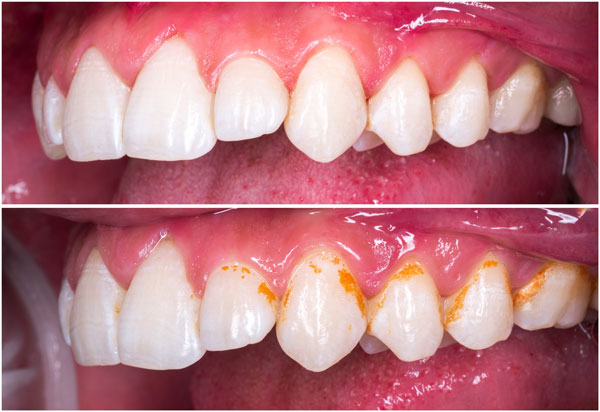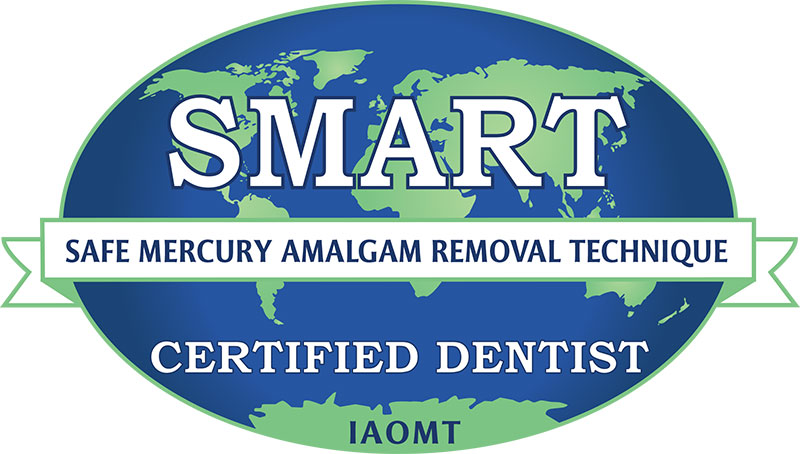What is the cause of teeth stains and discolouration?
Based on the national smile surveys, ca. 40% to 50% of the population are concerned about the appearance of their teeth. Teeth discolouration, the main reason, has been stated to be the biggest concern in cosmetic dentistry.
Several types of stains are related to genetic, pharmacological, and environmental origins, while the most common causes of enamel surface staining seem to be beverages like red wine, tea, coffee, various foods, spices, and smoking.
When treating teeth discolouration, it is important to identify the possible causes, nature, and depth of teeth discolouration. On the other hand, the shade of the teeth is determined by the colour of the underlying dentin, coupled with the thickness, translucency and value of covering enamel.
What are the potential causes of teeth staining?
Potential causes of teeth staining include the following:
- Poor oral hygiene may lead to many types of stains or tooth discolouration.
- Smoking tobacco may cause various health issues, as well as yellow stains with an orange hue on the front and back of the teeth.
- Drinking coffee, as well as some spices, may cause brown stains.
- Drinking tea, in particular black tea, causes superficial black stains.
- Drinking red wine causes dark, reddish tooth surface staining.
- Black subgingival tartar build-up of bacterial biofilm around the gum line causes dark black stains at the top edge of the teeth around the gum margins, which can spread deeper under the gum.
- Some mouthwashes, e.g. chlorhexidine gluconate (CHX).
- Enamel hypo-calcification or enamel dysplasia caused by disturbances during enamel development is more prevalent in children.
What are extrinsic stains, and how are they removed?
Many types of enamel stains are presented in several colours, normally brown or yellow.
Most patients have extrinsic or stained enamel, so-called extrinsic staining.
This heavy type of staining caused by calculus is generally removed during a routine hygiene appointment with a dental hygienist by means of an ultrasonic scaler.
The superficial deposit staining on the enamel surfaces can be eliminated by using prophy polishing or “Air-flow”, produced by a powerful spray containing water, air and fine sodium bicarbonate powder.

The combined EMS Ultrasonic and Air-Flow will remove calculus, biofilm, and surface stains gently and efficiently. The immediate clinical outcome results in clean, bright and smooth teeth surfaces. At the end of each hygiene appointment, the Air-Flow procedure accesses and removes the deepest extrinsic stains between the teeth surfaces within minutes.
Airflow is a pain-free procedure that enhances the hygiene experience and removes the deeper staining and harmful biofilm-entrapped bacteria. Airflow treatment is a comfortable, hygienic therapy that cleans the teeth surfaces during a single appointment, leaves your teeth smoother, and gives a great smile with confidence.
What are intrinsic stains, and how are they removed?
Most intrinsic teeth staining requires adequate investigation into the possible causes of discolouration.
- The ageing process causes tooth enamel erosion, surface wear and yellowish surface staining.
- The whitening may hardly work on the age-related yellow discolouration
- Decaying teeth present with intrinsic internal dark and black staining
- Require excavation and composite bonding using an opaque layering technique
- The necrotising pulp can cause an initial pain followed by disintegrating the blood cells and pigments
- Require root canal treatment and internal whitening prior to restoration if no crown is provided
- Chemotherapy and some other cancer treatment
- Require termination of the treatment and reassessment
- Tetracycline tooth discolouration as a result of infection during childhood.
- Require further assessment, whitening and reassessment.
Many whitening products are available on the market, which need a sound evaluation regarding their safety, effectiveness and long-term results.


